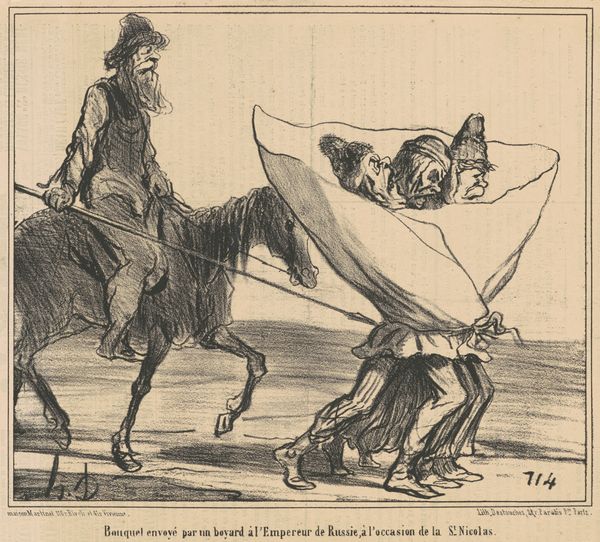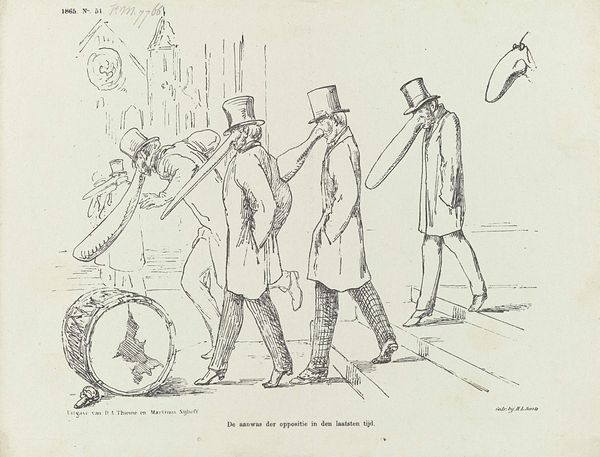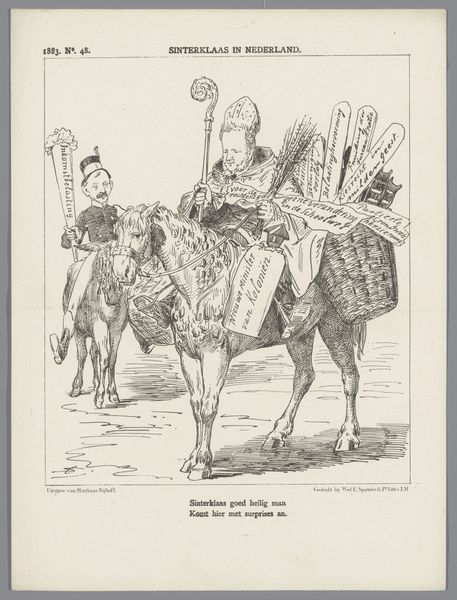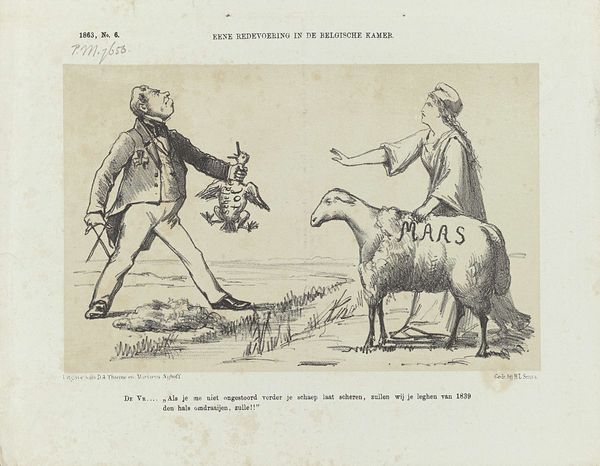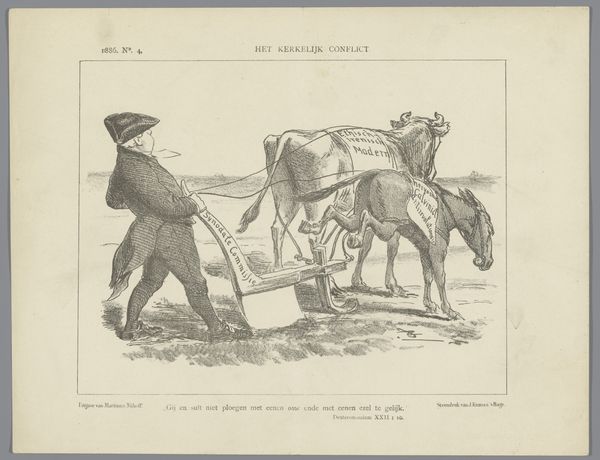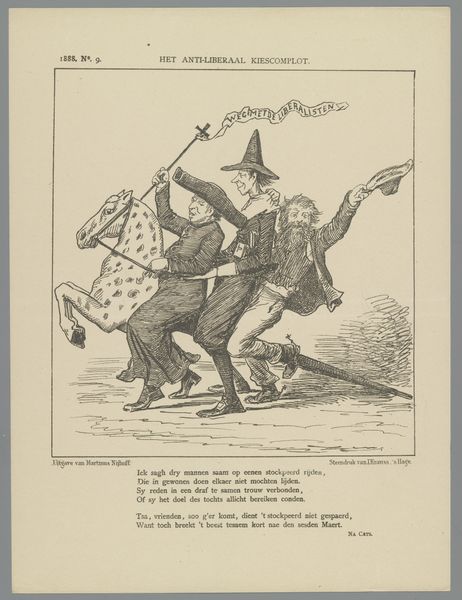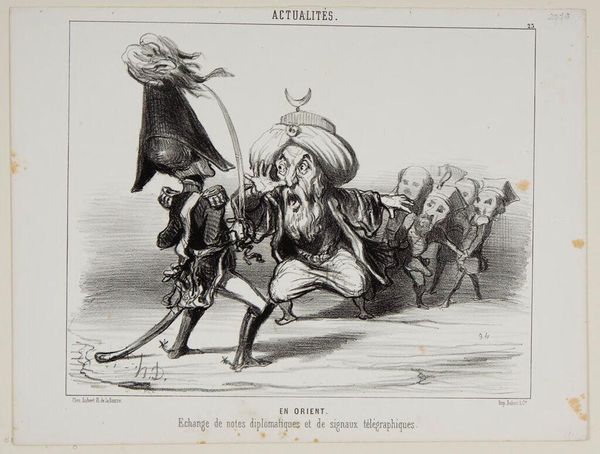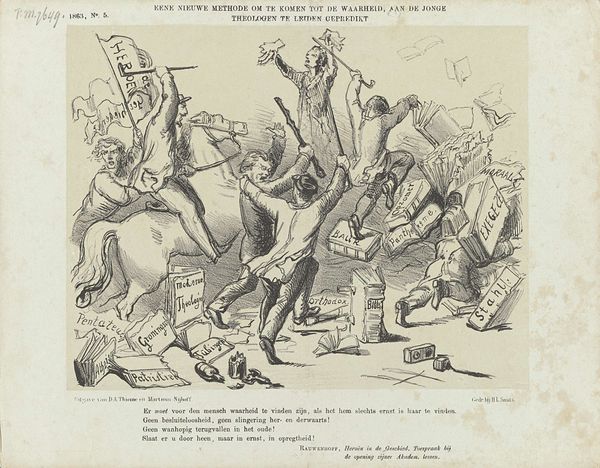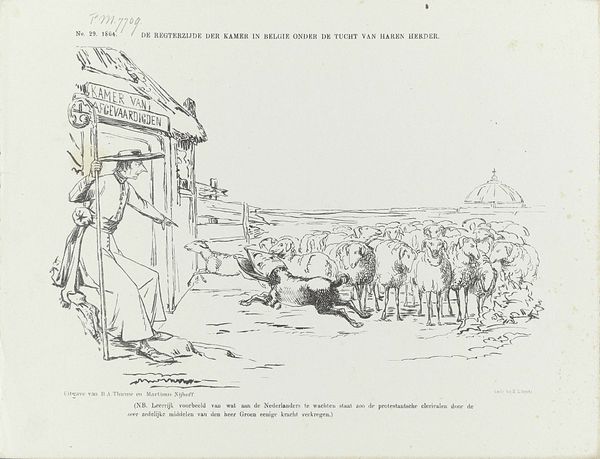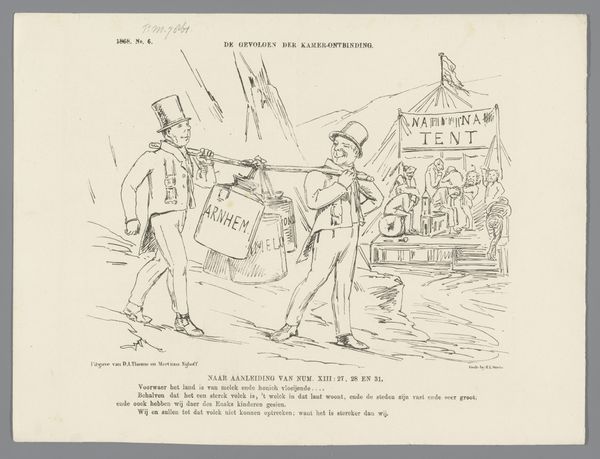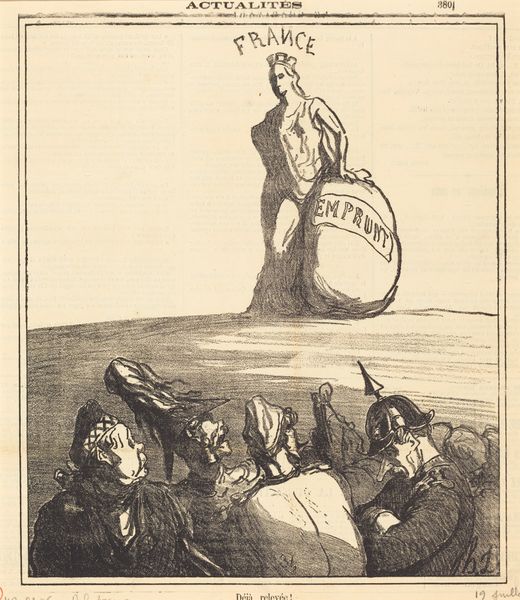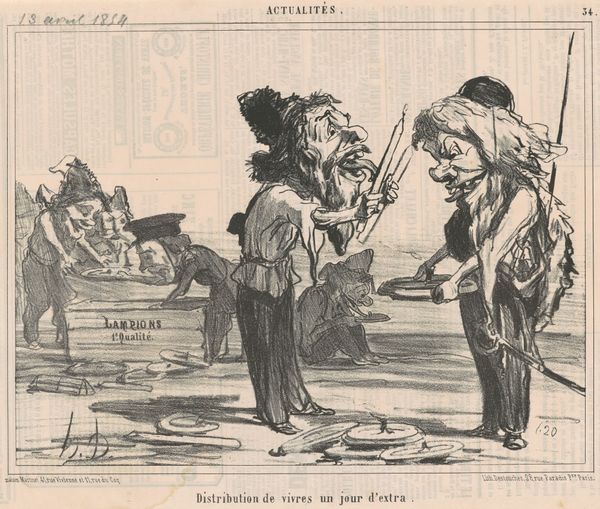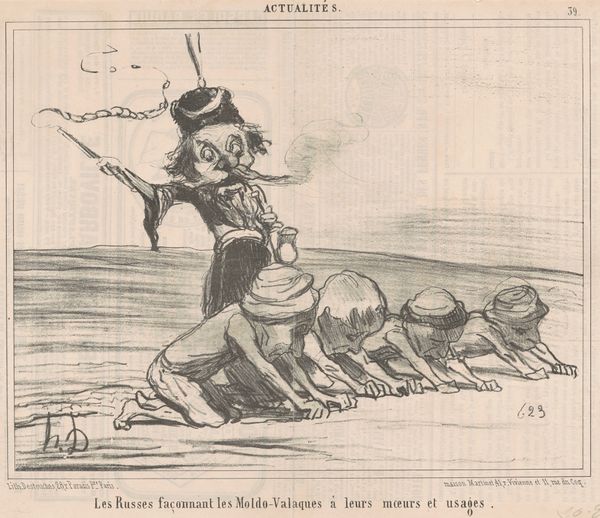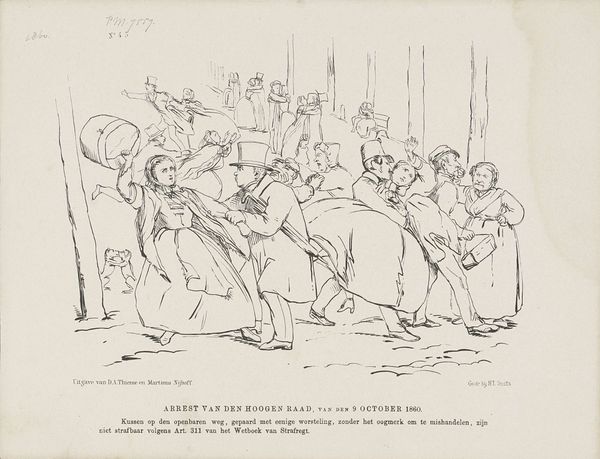
Spotprent op de goedkeuring van de plannen van de regering door de Eerste Kamer, 1862 1862
0:00
0:00
Dimensions: height 215 mm, width 275 mm
Copyright: Rijks Museum: Open Domain
This print, made by Johan Michaël Schmidt Crans in 1862, uses lithography to deliver its message. It’s not just an image; it’s a statement etched in stone, then transferred to paper. Notice how the lithographic process itself enables the artist to create multiple impressions of the same image, which can be distributed widely and quickly. The relatively low cost of lithography meant that political satire such as this could reach a broad audience. The camel trains, burdened with “Begrooling Oorlog” and “Begrooling Kolonien”, only serve to highlight the cost of government plans. With its stark contrasts and sharp lines, the lithographic technique emphasizes the weight of these issues on the backs of the people. It shows how the technology of printmaking can itself be a tool of critique, enabling artists to engage directly with the social and political issues of their day, and challenging traditional distinctions between art and activism.
Comments
No comments
Be the first to comment and join the conversation on the ultimate creative platform.
